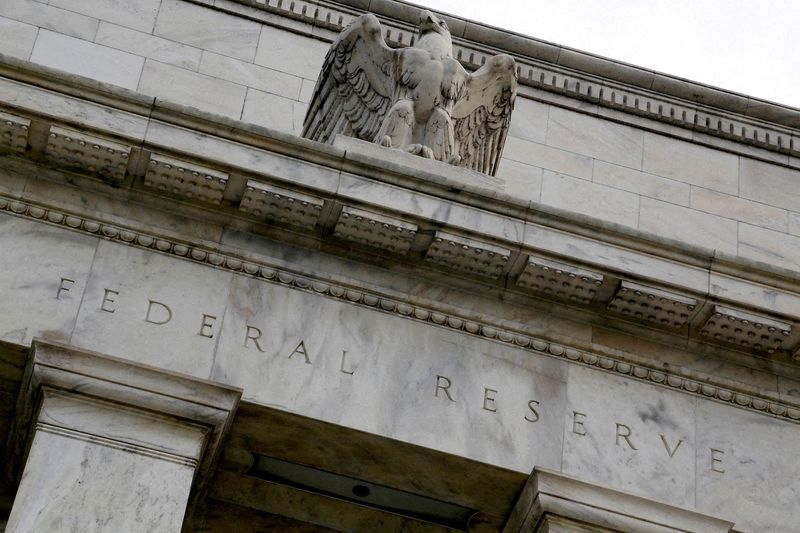
© Reuters. FILE PHOTO: An eagle tops the U.S. Federal Reserve building’s facade in Washington, July 31, 2013. REUTERS/Jonathan Ernst/File Photo
By Ann Saphir and Howard Schneider
(Reuters) -Federal Reserve policymakers seeking greater confidence that inflation is on track to their 2% goal may have gotten the opposite on Friday when data showed U.S. job growth surged last month at well above the pre-pandemic pace, and wage growth accelerated.
The numbers – 353,000 new jobs added across a broad range of sectors and hourly earnings up 4.5% from a year earlier – do not put U.S. central bank officials off course for interest rate cuts later this year.
But ongoing labor market strength could make the road to rate cuts a longer one. Revisions published Friday to last year’s data show the U.S. economy added 3.1 million jobs last year, more than the 2.7 million earlier estimated, despite the Fed’s aggressive rate hikes.
This week, Fed Chair Jerome Powell said the job market need not necessarily weaken to get progress on inflation, which fell sharply from 5.5% at the start of last year, to 2.6% by the end by the Fed’s preferred measure.
But continued outsized job gains could add to the Fed’s caution about easing policy too soon.
“The Fed would be very wary of cutting into a reaccelerating economy,” wrote Evercore ISI economists. “Strong growth and employment makes the Fed want to accumulate more evidence subdued inflation can continue.”
The central bank on Wednesday kept its benchmark overnight interest rate in the 5.25%-5.50% range, where it has been since July. Powell said that would likely mark the peak, and that rate cuts would only come once policymakers have “greater confidence that inflation is moving sustainably down to 2%.”
Data delivering a sufficient degree of confidence was unlikely to be in hand before the Fed’s meeting next month, Powell said.
Fed Governor Michelle Bowman, speaking at a banking conference late Friday in Hawaii, cautioned against cutting rates “too soon.” She said that the strong job growth suggested last year’s labor market rebalancing was stalling out and accelerating wage increases posed upside inflation risk.
To Chicago Fed President Austan Goolsbee, though, the jobs report was reassuring.
“We wouldn’t want to make much of any one month, but the continued strength of the labor market, if that continues, would lessen my worry that the job market side of our mandate is deteriorating,” Goolsbee told the Wall Street Journal in an interview.
Rising worker productivity may mean Fed officials will need to rethink how much economic and employment growth can occur without stoking inflation, he said, according to the paper.
So while some analysts may see the strong hiring as a reason for the Fed to wait on rate cuts, “you can’t really do that if there are positive supply shocks working their way through the system.”
Some Wall Street analysts that had held on to their forecasts for a March rate cut abandoned those Friday in favor of May or June. Traders of rate-future contracts are now pricing in an 80% chance the Fed will leave rates on hold next month but begin a series of five quarter-point rate cuts at their April 30-May 1 meeting.
REVISIONS, SKEPTICISM
Some analysts downplayed the January jobs report, noting that statistical adjustments meant to account for seasonal patterns in hiring and firing may end up overstating the strength of job gains.
Other recent data appears to encourage faith in inflation’s further decline this year along with worries about the labor market, including a string of strong productivity data and reports of rising layoffs.
Analysts and Fed policymakers will watch next Friday’s annual revision to the estimates for consumer inflation, which fell by almost half to 3.4% by December.
Last year’s update to the prior year’s consumer price index data erased what had looked like good progress on inflation in 2022, and Fed Governor Christopher Waller says he will be watching this year’s revisions closely.
CBS’ “60 Minutes” program on Sunday will air an interview with Powell conducted on Thursday. It was not clear if the Fed chair, who gets early access to critical economic data, had the jobs report in hand at the time of the interview.
Source: Investing.com





























